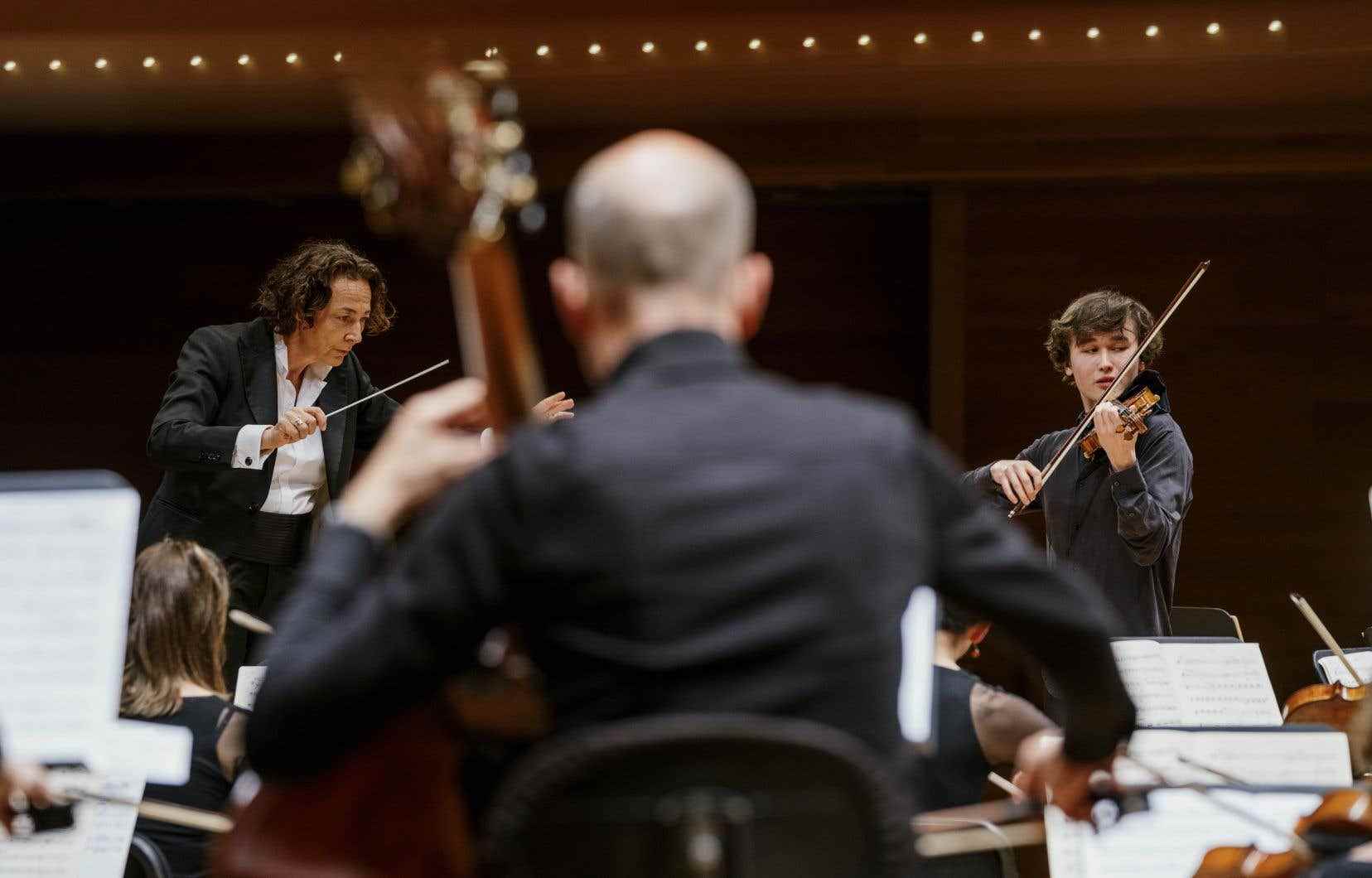Nathalie Stutzmann made her expected debut as a conductor in Montreal on Saturday with the Orchester Métropolitain. An unexpected spectator was seated at the basket in the person of the OSM’s musical director, Rafael Payare, who undoubtedly did not regret his evening.
When we remember the first contact from the back with the great contralto Nathalie Stutzmann, 57, who became a conductor, we will remember above all having seen a natural, precise, very eloquent direction. When we know that Stutzmann, who came late to the management, always wanted to be a chef but that she studied at a time when “that was not done”, we are only more moved, almost upset. So much “lost” time, and no doubt frustrations: she is such a conductor in her veins…
millimeter Prokofiev
These qualities were seen in the accompaniment of the 2e Violin Concerto of Prokofiev, where her gesture not only framed things and gave not only millimetric entries, but sometimes showed without boasting what she wanted us, spectators, to pay attention to.
The particular beauty of this Prokofiev, with the excellent Daniel Lozakovich, was the quality of the agreement in the way of approaching the phrases (precision, proportions, colors, soloist-orchestra symbiosis). Stutzmann and Lozakovich played full complementarity. The thing was noticeable at the beginning of the 2e movement, shelled without affect by the orchestra while the violin sang with lyricism. Curiously, this movement was getting bogged down a bit, as if won over by a form of weariness. In the FinalLozakovich was not the most powerful and surly of bows, but his purity of play and intonation throughout the work earned him deserved success.
We have retained the concerto more than the symphony, because, even if her dazzling career has led, these days, Nathalie Stutzmann to conduct the Pathetic with the greatest orchestras in the world, this kind of catalog of personal ideas did not really come together in a grand design. The 2e and 3e movements did not pose any particular questions, but the 1er and the 4e are based on many changes of tempos and expression which did not always fall perfectly.
Nathalie Stutzmann does not want to bog down 1er movement, of course, but passes a little indiscriminately on the great theme ” molto cantabile, with expansion “. The animation it breathes is not assimilated in the same way by all the musicians, and the cohesion is not that, usual, of OM. The grand climax culminates with a fff, but this results from an energy accumulation effect. To make it “remarkable” by creating a dynamic hole, or a sonic float, just before, doesn’t make sense. Moreover, the ardor of Mathieu Pouliot, replacing Julien Bélanger on the timpani, is commendable, but in the 1er shutter, he pushed the cork a little too far. On the other hand, in the 3e movement (dry drumsticks therefore a lot of impact, but less “noise”), his complicity with the bass drum was a pleasure to see. It is also these moments of palpable musical jubilation that we come to seek.
A change of era
In the Adagio lamentoso, the main problem came at the end. Nathalie Stutzmann wanted to show that the conclusion should not be too slow, but the final section, where the crescendo heartbeat is mimicked by the double basses, is born in limbo, on the nuance piano. If we start strong mezzo, the effect collapses. From this point of view, Juanjo Mena’s steely vision at the OSM was, on the whole, more convincing.
The other fact of the evening was therefore the presence of Rafael Payare alongside the general manager of OM, Jean Dupré, in the basket. An extremely strong sign of a new era, and of a finally mature relationship between two respectable cultural institutions of a respected metropolis.
